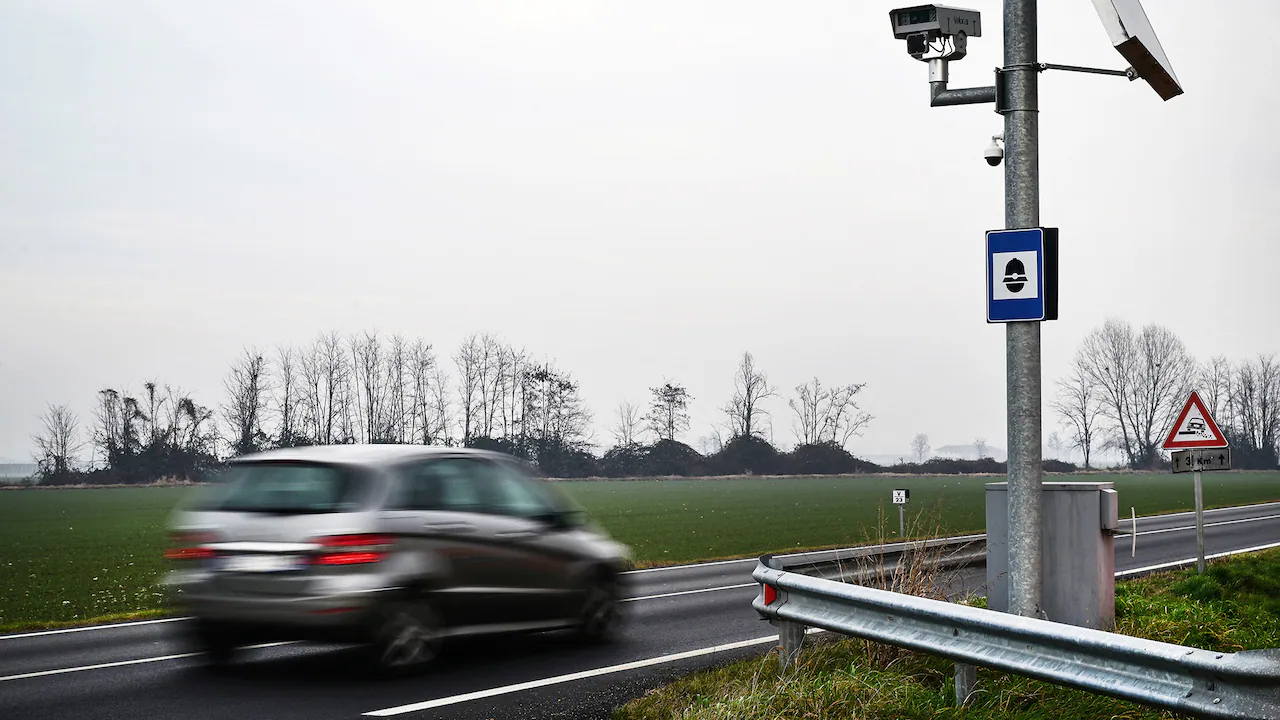Copyright cbc

On a winter’s day in 2024, in a suburban town near Padua, Italy, commuters awoke to a surprise: a speed camera, hacked down by an angle grinder, bearing the message “Fleximan is coming." After dozens of copycat speed camera attacks, the name Fleximan has achieved a kind of mythic status in Italy. “He was considered a local hero,” said Tom Roper, an English school owner who has lived in the region for 15 years. “I had people calling me, asking, ‘Do you know Fleximan?’” But the flashiness of Fleximan’s vigilante actions hide a surprisingly broad consensus, across Europe, that speed cameras not only work but are widely desired. “If you ask citizens, support for enforcement is quite high,” said Jenny Carson, a project manager at the European Transport Safety Council (ETSC), based in Brussels, Belgium. “People want speeds to be reduced.” Italy, home to more than 10,000 active speed cameras — the most in all of Europe — is proof of this trend. A 2018 European survey showed nearly 70 per cent of Italians supported stricter rules on speeding — despite nearly 50 per cent saying they sped in the last 30 days. At a time when Ontario Premier Doug Ford has gone to war with speed cameras — calling them a “cash grab” and threatening to ban the technology outright — it’s worth asking the question: how did Europe manage to generate such broad support for automated enforcement and implement a system that could be saving thousands of lives each year? The French experiment In 2002, after a series of high-profile traffic accidents, French President Jacques Chirac promised to make reducing traffic deaths a core policy of his government. Today, the country has more than 2,400 cameras in operation. Laurent Carnis, a traffic safety expert at France’s Université Gustave Eiffel, said France offers an unfortunate lesson for Canada: building broad support for a system like theirs really does require buy-in at the top. “It’s very important to have political commitment,” he said. In France, that commitment helped build the centralized systems necessary to levy fines against drivers from across the country, and beyond. Like other countries in Europe, France also treated speed cameras as an educational opportunity as much as an enforcement tool. It used two types of cameras: fixed ones, signposted well in advance, to train drivers to expect automated enforcement; and mobile ones, used to penalize speeders who tried to game the system. “The first is for prevention, the second is for punishment,” Carnis said. “This is the theory of deterrence. And it works quite well.” Across Europe, similar systems have resulted in average speeds dropping by 10 km/h or more, and road accidents falling by anywhere from 20 to 70 per cent. “We estimate that some 1,000 lives, and many more injuries, were avoided,” Carnis said. ‘Like a vaccine’ This tracks with results in Canada, where municipalities have reported average speed reductions of 20 km/h or more in the vicinity of speed cameras. But experts say such immediate impact has some downsides. With the highest rates of speeding virtually eliminated overnight, Carnis says, "what remains… is 'small offences.'" Carnis says that’s likely one factor behind the increasing opposition to speed cameras in France, which has recently seen vigilantes destroy as much as 75 per cent of the network. “People started saying, ‘It’s just a cash grab,’” he explained. “It’s like a vaccine — [when it works] the number of people who are impacted is lower and lower, so some people conclude that we should stop vaccination.” That’s one reason experts like Carnis advise governments to be selective — and transparent — about who they target with speed cameras. “When we first put out speed cameras, I wanted them set at 20 miles [32 km] an hour [over the limit] or something,” said Richard Retting, a traffic safety expert who helped implement North America’s first traffic cameras, in New York City. “If you focus on outliers that are going very fast, you build more public support.” That has been a core of Ford’s criticism of Ontario’s speed camera programs. He’s said drivers are being unfairly targeted for going five or 10 kilometres over the limit — despite thresholds actually set at 11 km/h over, and several of his own cabinet ministers being clocked at three times that. “People who have traditionally been able to evade law enforcement are sensitive to this issue,” Retting said. “Ultimately, one of the arguments against automated enforcement is that it doesn’t discriminate. It’s also a great argument for it.” Too fast — or too slow? But Canada’s problems with speeding may go deeper. Retting and Carnis both stress that before speed cameras can be implemented, speed limits should actually make sense. Study after study has shown that the wide lanes and ample shoulders common in Canadian road design often encourage higher speeds. And as cars and their safety features have evolved, drivers are ever more removed from the dangers of the road, and many feel safer breaking the speed limit. “You have to make sure, before you enforce the speed limit, [that] the speed limit is meaningful,” Carnis said. But even all of that still might not stop speed cameras’ opponents. In Italy, where roads are often narrow and crammed with traffic, and speed cameras are already identified on GPS, Fleximan’s vigilantism has prompted Deputy Premier Matteo Salvini to denounce the existing system. This shows that — among politicians, at least — Europe’s broad support for speed cameras may be starting to crumble. Roper, the school owner in Italy, has been hit with speed camera tickets a few times in his decades driving across Europe. But he still counts himself among the technology’s supporters. “The drivers here are mental,” he said. “You’ve got to find some way of controlling the craziness.”



